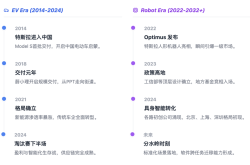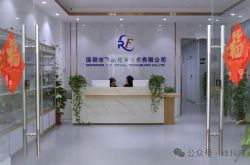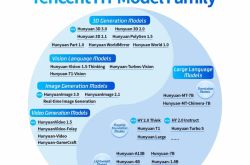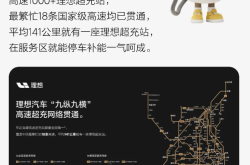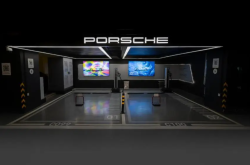The Merging of Virtual and Real: The Next Milestone for the Internet
![]() 08/26 2025
08/26 2025
![]() 549
549
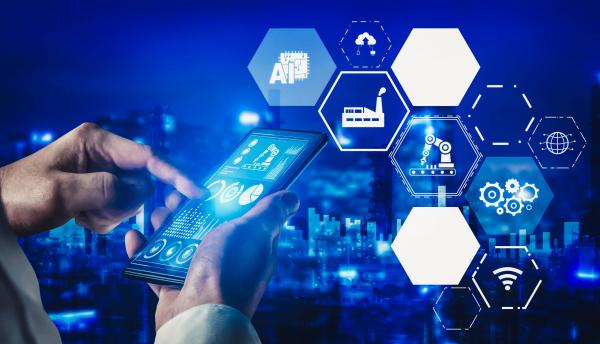
The traditional Internet paradigm is currently undergoing a significant transformation and upgrade, both technologically and commercially. From a technological standpoint, AI is progressively maturing and being implemented, gradually replacing "Internet+" with "AI+"; commercially, the centralized business model is giving way to a decentralized one, with more online players actively embracing offline and physical entities to forge new paths. To encapsulate and define this ongoing transformation, the convergence of virtual and real, as well as digital and physical integration, is undeniably the most fitting term.
As the dividends of the Internet era waned, people experienced a period of disorientation in both technological exploration and business model evolution. However, with AI becoming a certainty, especially as it increasingly interfaces with online and offline environments, the previous disorientation was dispelled, replaced by a new and highly certain developmental model and direction.
In summarizing the developmental model presented by AI, the emerging trend of integrating virtual and real is undeniably significant. As the integration of virtual and real becomes a new consensus, particularly when more players focus their development efforts on this front, we have reason to believe that it is no longer the exclusive domain of a few explorers but has become a critical aspect that virtually every player must consider. When this phenomenon occurs more frequently, it will inevitably mark the next milestone for the Internet.
AI as the Catalyst for Virtual-Real Integration
Reflecting on past endeavors, one key reason for the lack of methods for virtual-real integration is the inherent limitations of Internet technology, which primarily led to binary efficiency improvements rather than true integration. When Internet technology was seen as the connector for virtual-real integration, it failed to achieve a genuine fusion in the true sense.
With AI's gradual maturity and implementation across various scenarios and industries, the once elusive dream of virtual-real integration is now within reach, becoming a natural occurrence. Observing AI's current implementation in education, healthcare, logistics, manufacturing, and other sectors, it becomes evident that virtual-real integration is not merely the empowerment or transformation of the virtual economy to the real economy, as previously perceived, but a natural and deep integration of both.
The pivotal factor enabling this integration is AI's gradual maturity and implementation. In essence, AI has become the catalyst for virtual-real integration, rather than a tool for the virtual economy to empower the real economy. In the context of AI, both economies have their unique functions and roles. AI facilitates virtual-real integration, which is precisely the Internet's next milestone. This transformation stems from the evolution of Internet technology into AI technology.
New Industries as Byproducts of Virtual-Real Integration
Previously, the Internet's evolution failed to break out of the traditional cycle due to the absence of new industries or derivatives. This resulted in the supply side remaining unchanged, dominated by traditional industries. When the upstream of the industry still relies on traditional industries to supply downstream users, the supply-demand contradiction remains unresolved.
As virtual-real and digital-physical integration become mainstream, particularly with the emergence of new industries, the supply side undergoes a profound transformation. Production factors, processes, and efficiency are comprehensively upgraded. This upgrade leads to a comprehensive change in how the supply and demand sides connect and the products supplied.
This is a comprehensive and thorough transformation. Compared to past instances without new industries, the transformation triggered by virtual-real integration brings about a complete upgrade. As this upgrade occurs, the supply-demand equilibrium is no longer mediated but emerges naturally from new demand and supply. For the Internet, the emergence of new products and entities from virtual-real and digital-physical integration signifies a transformation leading to new development. Such a transformation represents a fundamental shift.
Decentralization as an Inevitability in Virtual-Real Integration
As the Internet evolves, particularly with the Industrial Internet gaining popularity, the key criterion for transformation is decentralization and de-platformization. Achieving decentralization is essential for true virtual-real integration, which in turn naturally leads to decentralization.
As the industry enters a new phase, with virtual-real and digital-physical integration becoming a trend, more players are actively dismantling barriers and disrupting ecosystems. Traditional platforms and centers are being broken down, replaced by new ones possessing characteristics of both economies. When this new economy emerges, traditional platforms and centers become obsolete.
Against this backdrop, decentralization becomes inevitable in virtual-real integration. Its emergence reflects another aspect of Internet evolution. The Internet is moving towards its next milestone, driven by virtual-real integration. This integration is the crucial factor leading the Internet to its next phase.
Final Thoughts
With AI's maturity, the long-pursued goal of virtual-real and digital-physical integration is no longer a distant dream but a natural reality. As this integration occurs more frequently, the true evolution of the Internet unfolds. Upon completion, the era of the Industrial Internet truly arrives, where new industries, models, and technologies will be the primary battlegrounds for competition.

